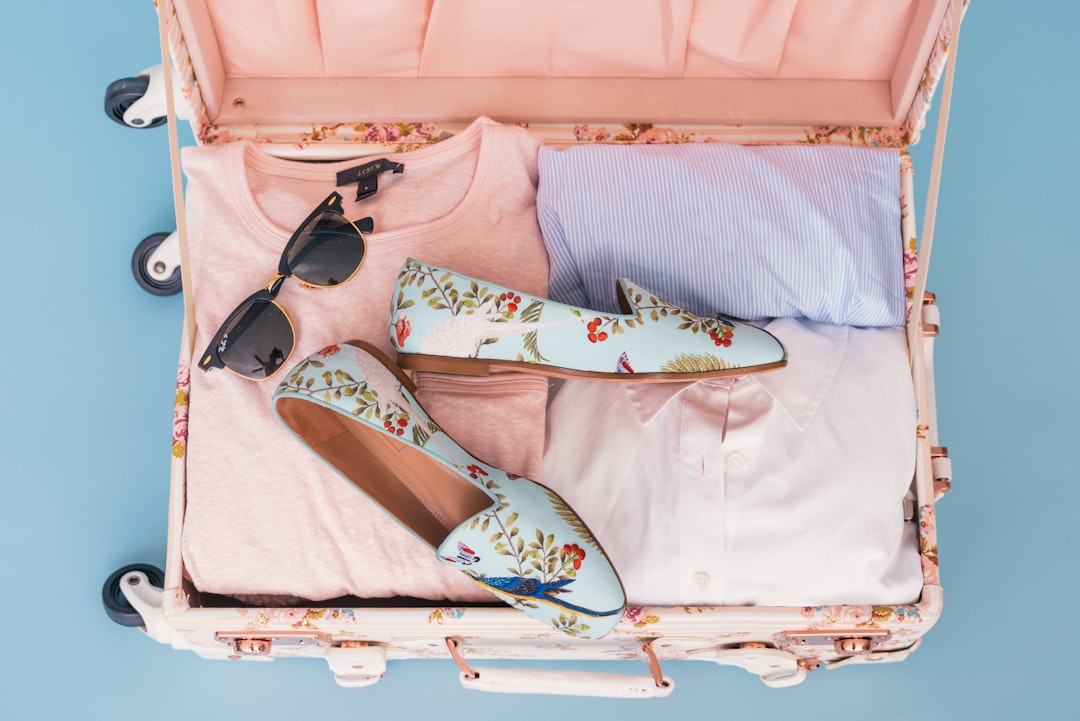Smart Packing Hacks for Long Term Travel

Introduction
Long‑term travel feels like a marathon, not a sprint. The difference between an adventure that runs smoothly and one that constantly drags you back to the airport bathroom for missing chargers or extra socks often comes down to how you pack. Smart packing isn’t about stuffing everything you own into a suitcase; it’s about curating a lightweight, flexible system that adapts to changing climates, cultures, and itineraries. This guide breaks down the mental shift, the core principles, and the practical hacks you can start using today to travel lighter, stay organized, and keep the focus on experiences rather than baggage.
The Mindset Shift
Before you even open a suitcase, ask yourself three questions:
- What is the absolute minimum you need to function comfortably for a month?
- Which items can serve multiple purposes?
- How will you replace or replenish items on the road?
Answering these honestly forces you to discard sentimental clutter and prioritize versatility. Remember that most things you think you need can be bought locally, borrowed, or replaced with digital alternatives. The goal is to travel with a “one‑thing‑one‑purpose” mindset, where each item earns its spot by solving a problem more than once.
Core Packing Principles
1. Weight Over Volume
A 20 kg backpack feels significantly lighter than a 15 kg suitcase that takes up twice the space. Prioritize lightweight materials, and consider the cumulative weight of accessories like chargers, toiletries, and books.
2. Modular Organization
Divide your gear into interchangeable modules such as “clothing block,” “tech block,” and “toiletries block.” This lets you swap sections quickly when moving between accommodations or climates.
3. Multi‑Use Items
Choose items that can serve at least two distinct functions. A sarong, for example, can be a beach cover‑up, a towel, a privacy screen, or a makeshift bag.
4. Replenishable Supplies
Plan to restock consumables like toiletries, snacks, and laundry detergent every few weeks. Carry only a starter supply and a small container for refills.
5. The 3‑Day Rule
Pack enough clothing for three days, then rely on laundry facilities or hand‑washing to keep the rotation fresh. This dramatically reduces the bulk of your wardrobe.
Clothing Hacks
The Capsule Wardrobe
Select 5–7 tops, 3–4 bottoms, 2 layers, and 2 pairs of shoes that can be mixed and matched. Choose neutral colors that complement each other, and add one or two accent pieces for variety.
Rolling vs. Bundling
Rolling clothing creates tight, uniform cylinders that fit neatly into compression bags and reduce wrinkles. For delicate items, bundle them with a thin layer of packing paper to protect fabric.
Compression Packing Cubes
Invest in a set of compression cubes. Place rolled garments inside, then compress the cube with the built‑in strap. This method can shrink the volume of a clothing block by up to 40 %.
Light‑Weight Footwear
Pick a pair of quick‑dry sandals for warm climates and a versatile, waterproof sneaker that doubles as a light hiking shoe. Avoid heavy boots unless you know you’ll be trekking extensively.
Laundry On‑The‑Go
Carry a small travel‑sized detergent sheet and a sink‑friendly laundry bag. Hang clothes on a portable travel line or a shower curtain rod to air‑dry overnight.
Gear Hacks
Dual‑Purpose Gear
A travel pillow that doubles as a neck brace, a solar charger that also works as a flashlight, or a dry‑bag that can serve as a waterproof daypack are all excellent choices.
Minimalist Kitchen
If you plan to cook, a collapsible silicone bowl, a lightweight titanium pot, and a universal travel utensil set take up minimal space. A small spice kit in zip‑lock bags adds flavor without bulk.
Fold‑Down Backpack
Pack a lightweight, fold‑down daypack inside your main bag. When you arrive at a new destination, you have a ready‑to‑use carry‑on for day trips, eliminating the need to buy an extra bag.
Multi‑Compartment Phone Cases
A phone case with a built‑in wallet, stand, and card slot reduces the need for a separate wallet and stand‑alone card holder.
Pack‑It‑Later Strategy
Instead of loading every optional gadget, start with a core set (phone, charger, headphones). Add items like a portable monitor or e‑reader only if the trip length or work requirements justify the extra weight.
Toiletries and Personal Care
Decant and Consolidate
Use 10 ml travel bottles for shampoo, conditioner, body wash, and moisturizer. Consolidate similar products—like using a 2‑in‑1 shampoo‑conditioner—to further cut down on containers.
Solid Alternatives
Switch to solid shampoo bars, toothpaste tablets, and a reusable safety razor. Solids eliminate the risk of liquid restrictions and reduce the chance of spills.
Refillable Toiletry Bag
Choose a waterproof, zip‑lock toiletry bag with internal loops. Refill the bag at each stop, discarding the old containers. This habit keeps your bag lightweight and hygienic.
Compact First‑Aid
A small pouch with a few band‑aids, antiseptic wipes, pain relievers, and any prescription medication you need is all that’s required for most minor issues.
Tech and Power Solutions
Universal Power Strip
A compact, surge‑protected power strip with USB‑C and USB‑A ports covers most charging needs across countries.
Travel Adapter with Fuse
Select an adapter that includes built‑in fuses for each outlet. This protects both your devices and the local wiring from overload.
Solar Charger
A foldable solar panel with a 10 W output can top‑up a power bank during long train rides or beach days. Pair it with a 20 000 mAh power bank for emergency backup.
Cable Management
Use a silicone cable organizer to keep charging cords, earphones, and data cables neatly coiled. A small zip‑lock bag can hold spare SD cards and SIM cards, preventing loss.
Cloud‑First Workflow
Store documents, photos, and work files in the cloud. This reduces the need for external hard drives and ensures you can access data from any device.
Documents and Security
Digital Copies
Scan passports, visas, insurance cards, and important IDs, then store them in an encrypted cloud folder and a password‑protected USB drive.
RFID‑Blocking Wallet
A slim RFID‑blocking wallet protects against electronic pickpocketing while keeping cards and cash organized.
Money Belt
Wear a thin, zippered money belt under clothing for cash and essential documents. This keeps valuables close to the body without adding bulk to the main bag.
Minimalist Travel Insurance
Choose a policy that covers health, theft, and trip interruption for a set period. Keep the policy number and emergency contact details saved on your phone for quick access.
Food and Snacks
Collapsible Food Containers
Silicone collapsible containers can hold leftovers or packed lunches and flatten when empty, saving space.
Bulk Snacks
Carry a small resealable bag of mixed nuts, dried fruit, and protein bars. These items provide quick energy and last for weeks without refrigeration.
Reusable Utensils
A lightweight titanium fork‑spoon combo folds into a compact shape and eliminates the need for disposable cutlery.
Local Market Strategy
Plan to purchase fresh produce and pantry staples at local markets weekly. This reduces the need to carry large amounts of food and lets you experience local cuisine.
Organization Systems
The 3‑Cube Method
- Cube One: Clothing block (rolled and compressed).
- Cube Two: Tech and accessories (packed in a padded sleeve).
- Cube Three: Toiletries and first‑aid (waterproof zip‑lock bag).
Place the cubes side by side in the main compartment. This visual layout makes it easy to locate items without unpacking the entire bag.
Color Coding
Assign a color to each category using zip‑lock bags or small fabric pouches. For example, blue for tech, red for toiletries, green for clothing. The visual cue speeds up packing and unpacking.
External Pocket Utilization
Store items you need on the go—passport, travel tickets, a pen, and a small notebook—in the external zippered pocket. This keeps the main compartment free for bulkier items.
Daily Carry Bag
Pack a lightweight daypack with a water bottle, a reusable coffee cup, a small notebook, and a few essential electronics. Having a ready‑to‑go bag reduces the need to rummage through the main luggage each morning.
Step‑by‑Step Packing Process
- Create a Master List – Write down every category (clothing, tech, toiletries, documents, etc.) and list the essential items you need.
- Choose Your Base Bag – Pick a backpack or suitcase that meets airline weight limits and has modular compartments.
- Lay Out All Items – Spread everything on a clean surface. This visual helps you see duplicates and unnecessary items.
- Apply the 3‑Day Rule – Keep only three days’ worth of clothing, then plan for laundry.
- Roll and Pack – Roll each clothing item, place them in the first compression cube, and compress.
- Tech Block – Place chargers, cables, and devices in a padded sleeve, then insert into the second cube.
- Toiletries Block – Fill a waterproof zip‑lock bag with decanted liquids, solid alternatives, and a mini first‑aid kit. Compress and place in the third cube.
- Fill Gaps – Use socks, underwear, or small accessories to fill any remaining space in the cubes.
- Load the Main Bag – Position the three cubes side by side in the main compartment, ensuring the heaviest items are close to your back for better balance.
- External Pockets – Stow travel documents, a reusable water bottle, and a small snack in the outer pockets for quick access.
- Final Weight Check – Use a luggage scale to verify you are under the target weight. Adjust by removing non‑essential items if needed.
Maintenance on the Road
- Weekly Review – At the end of each week, empty the daypack, clean the cubes, and reassess what you actually used.
- Re‑Pack Smart – When moving to a new country, use the same cubes but replace region‑specific items (e.g., plug adapters).
- Seasonal Swaps – If traveling across climate zones, keep a separate “cold‑weather” cube stored at a friend’s house or a luggage storage service.
Tips for Specific Travel Styles
Backpacking
- Prioritize a lightweight frame and a rain cover.
- Keep the pack under 15 kg to stay comfortable on long treks.
Digital Nomad
- Add a portable monitor and an ergonomic mouse if you work long hours.
- Choose a bag with a laptop sleeve and a dedicated organizer for cables.
Slow Travel / House‑Sitting
- Bring extra reusable containers and a compact kitchen set.
- Pack a small sewing kit for quick repairs.
Adventure Travel
- Include a compact dry‑bag for water‑proof gear.
- Pack a multi‑tool and a lightweight tarp for emergencies.
Packing Checklist (Condensed)
- Clothing: 5 tops, 3 bottoms, 2 layers, 2 pairs shoes, 7 underwear, 7 socks, 1 swimwear, 1 hat.
- Tech: Phone, charger, power bank, universal adapter, headphones, laptop/tablet, portable monitor (optional).
- Toiletries: Solid shampoo bar, toothpaste tablets, travel‑size containers, razor, first‑aid pouch.
- Documents: Passport, visas, insurance card, digital copies on cloud, RFID wallet.
- Food: Collapsible containers, bulk snacks, reusable utensil set.
- Miscellaneous: Compression cubes, fold‑down daypack, rain cover, solar charger, reusable water bottle.
Final Thoughts
Smart packing for long‑term travel is a blend of strategic mindset, modular organization, and clever hacks that shave off every unnecessary gram. By embracing the capsule wardrobe, using compression cubes, opting for multi‑use gear, and establishing a routine of weekly review, you’ll find yourself traveling lighter, moving faster, and spending more time immersed in the places you visit. The real luxury on the road isn’t a fancy hotel or a gourmet meal; it’s the freedom that comes from knowing your bag contains exactly what you need and nothing more. Safe travels!
Random Posts

Building a Productive Remote Culture Across Global Coworking Networks
Learn how to forge a thriving remote culture that works across global coworking spaces by combining human-centric leadership, smart tech, adaptable spaces and data-driven feedback for real productivity
2 months ago

Spain Cost of Living Guide for Digital Nomads
Discover Spain’s digital nomad cost of living: climate, culture, low expenses, regional price differences, visa basics, and smart budgeting tips to enjoy a Mediterranean lifestyle without breaking the bank
3 days ago

Building a Secure Financial Plan on the Road
Learn to build a resilient financial system for digital nomads, covering income streams, budgeting, tax compliance, insurance, retirement and emergency funds, so you can travel worry-free.
1 month ago

Nomad Essentials A Complete Guide to Apps, Books and Podcasts
Discover the ultimate toolkit for digital nomads: essential apps, must-read books, and top podcasts that keep you productive, inspired, and connected wherever you roam.
2 months ago

Building a Portable Money Management System for Travelers
Learn how to craft a portable money management system that lets digital nomads earn, spend, save and report anywhere, balancing access, security, compliance and low costs.
2 months ago
Latest Posts

Essential Software Every Remote Professional Should Use
Master remote work with essential tools: instant messaging like Slack, high definition video calls such as Zoom, and asynchronous voice apps. Streamline communication, stay connected and boost productivity.
1 day ago

Mastering Remote Work Productivity for Digital Nomads and Freelancers
Learn proven habits, tools, and tactics that help digital nomads and freelancers stay focused, deliver quality work, and maintain a sustainable lifestyle while traveling the world.
1 day ago

Tech‑Friendly European Towns Perfect for Remote Living
Discover Europe’s best small towns where fast internet, affordable living and vibrant tech communities let you work remotely while soaking up historic charm, lakeside views or mountain air.
1 day ago